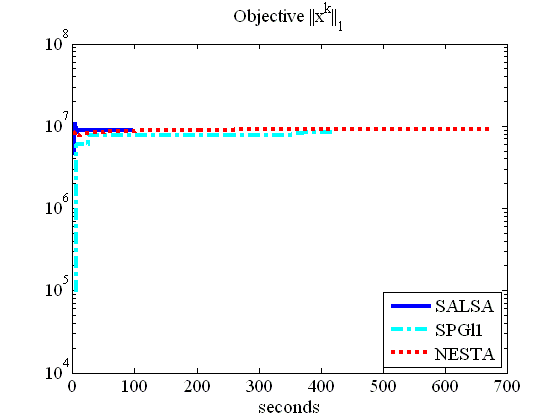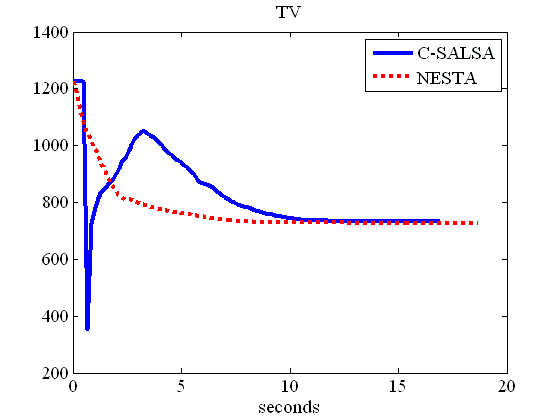

Experimental results on a set of problems including image deblurring, reconstruction from projections, and inpainting, show that both SALSA and C-SALSA are noticeably faster than other available algorithms and are therefore strong contenders for the state-of-the-art. SALSA is compared against TwIST, SpaRSA, and FISTA, while C-SALSA is compared against SPGL1 (wherever applicable), and NESTA. Refer to our papers for more details on the experimental setup and results.


(left) Original image; (right) Blurred (9*9 uniform blur) + Gaussian noise (BSNR = 40 dB, σ = 0.55)

Estimate obtained using SALSA with a 4 level redundant Haar wavelet representation and τ = 0.0075;


Estimate obtained using C-SALSA with a 4 level redundant Haar wavelet representation, ε = √(N+√(8N) ) σ; N = number of pixels


(left) Plot comparing the evolution of the objective function (||x||_1) over time, of C-SALSA, SPGL1, and NESTA; (right) Plot comparing the evolution of the constraint, for each of the algorithms.
Return to SALSA homepage


(left) 128*128 Shepp-Logan Phantom; (right) frequency domain sampling mask with 22 radial lines.

Estimate obtained using SALSA with τ = 9e-5;


Estimate obtained using C-SALSA, with ε = √(M+√(8M) ) σ ; M = number of observations


(left) Plot comparing the evolution of the objective function (||x||_1) over time, of C-SALSA, SPGL1, and NESTA; (right) Plot comparing the evolution of the constraint, for each of the algorithms.
Return to SALSA homepage